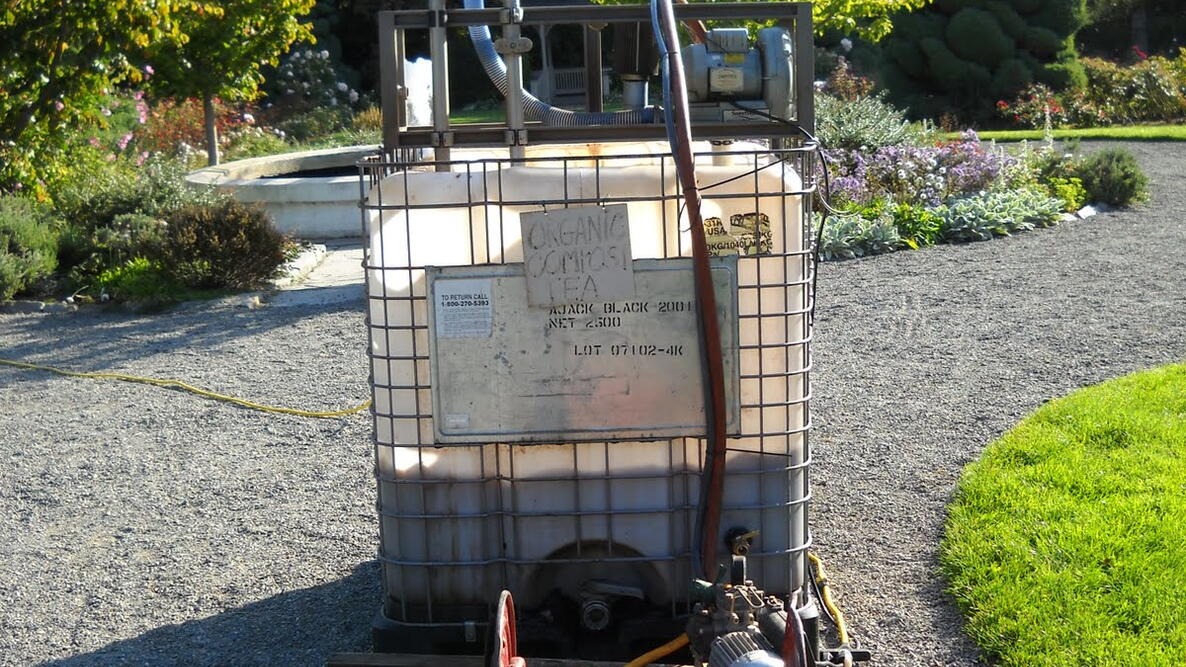Primary Image

Caption
Compost tea tank
Photo Credit
Kiley Jacques
The Basics of Compost Tea: A Gardener's Favorite Fertilizer!
More Like This
I made my own fertilizer tea this year & it isn't nearly as complicated as mentioned above. I have a few alfalfa plants and a few clover plants that I cut down and mix all those stems in a 5 gallon bucket of water in the sun for 2 to 4 days, stirring with a stick daily. No fuss - super easy. Pour that "tea" in my irrigation ditches around my tomatoes and peppers then use the wilted alfalfa and clover as mulch. Works great!
Being a photographer, I've photographed many leaves with rain drops, morning dew. If you look closely each drop is like a magnifying glass with curved lens. This will enlarge an area withing the drop. There are of course many drops on a leaf. When a bright light source hits the drop on the leaf side, it's magnified. During the bright day, it could affect the leaf and cause burning, even if minutely. I always water as mentioned early AM or late afternoon the light is subdued. Have pics, if allowed to email to OFA.
My $0.02.
Tom, as a photographer you should understand the concept of focal points and focal lengths. If water droplets act as a lens on the surface of a leaf, the point at which the light converges to burn the leaf does not occur directly adjacent to the lens (aka leaf surface). The light convergence would occur some short distance beyond the face of the leaf. Its the same concept as using a magnifying glass to burn things. You don't hold the lens directly against the surface. This myth has been thoroughly disproved by researchers.
Watering plants in the sun does not cause burning. If it did, entire farms and forests would be killed every time it rained in the day. Think about it. Just a bunch of poppycock.
May have been slightly incorrect with prior statement..Apologies.
There is no factual basis behind the belief that watering in the sun causes burning.
Is it possible that it’s the chemicals in the city water that stick to the plant leaf that the sun burns. That’s what I have always thought it was. I’ve seen it happen and thought it had to be something in the water.
While chemicals in tap water can sometimes affect plant health over time, they’re not usually the cause of leaf burn in sunlight. What’s more likely is that water droplets sitting on the leaves act like tiny magnifying glasses, concentrating the sunlight and causing those burned spots.










Comments